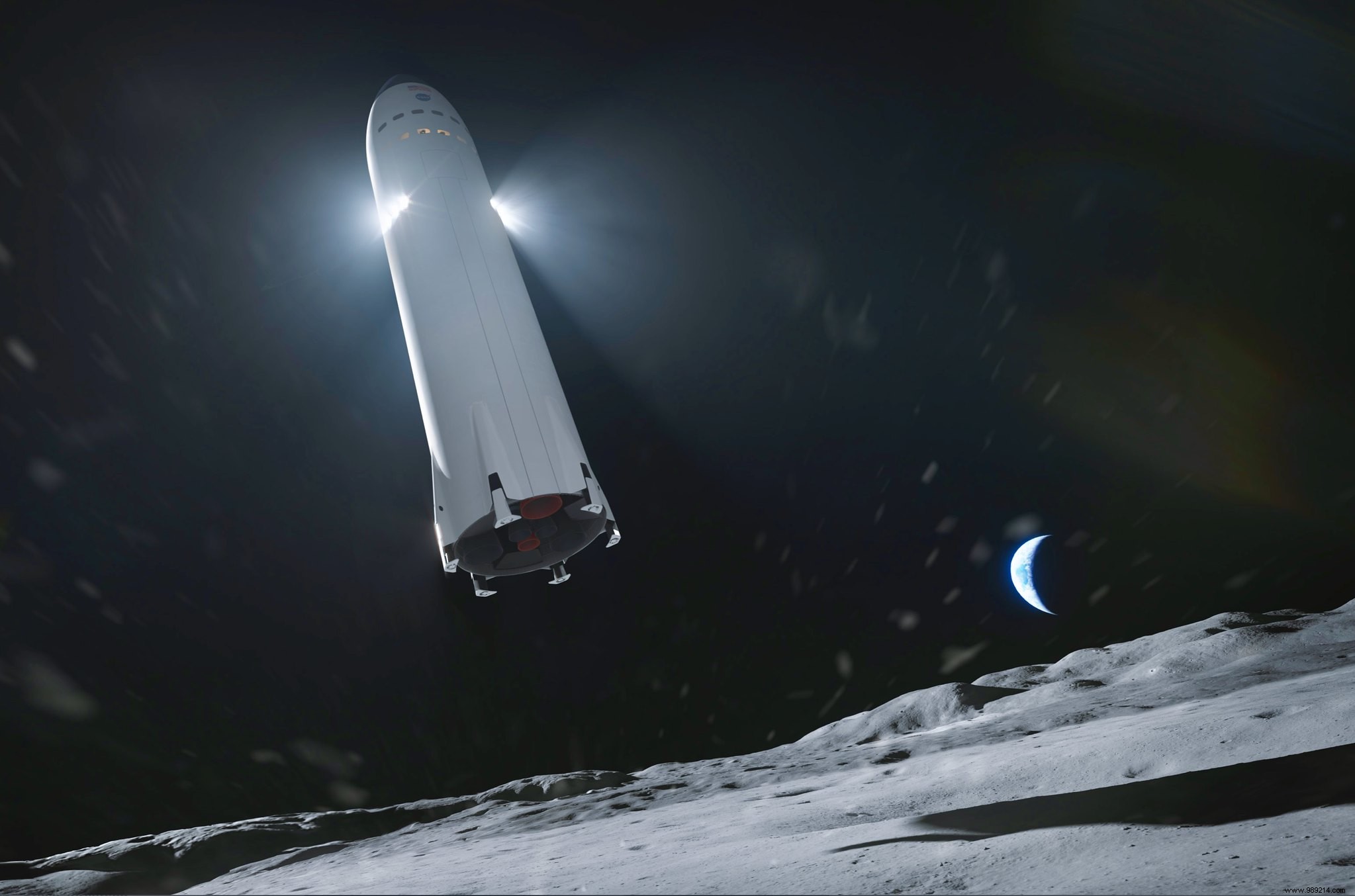The top US Senate committee is asking NASA to choose a second company to build its new lunar lander as part of its Artemis program. To do this, the American agency will have to deal with a (small) budget extension.
In April 2021, NASA announced that SpaceX would be its sole contractor to supply the future lunar lander for the Artemis program, which aims to return humans to the Moon within the decade. This decision came as a surprise, as many expected the agency to choose two of the three companies positioned for this contract to support the principle of competition. NASA then justified itself by pointing out the lack of resources necessary to support two teams .
NASA's initial decision to award this contract for the construction and development of a lunar lander only to SpaceX also drew strong protests from these two competing companies, Blue Origin and Dynetics, which did not hesitate to take legal action against NASA. These operations, still in progress, have temporarily suspended the development of this lander program. And obviously, at least one of these two companies will prevail.
On Tuesday, October 18, the Senate Appropriations Committee, the largest U.S. Senate committee that oversees all discretionary spending legislation in the Senate, indeed asked NASA to choose a second company. (Translate:we also want Blue Origin.)
To do this, a budget extension of 100 million dollars will be granted to NASA, according to SpaceNews. With this finally, NASA should be able to "provide redundancy and concurrency, including strong research, development, test, and evaluation support for no less than two HLS teams “, one can read in a report.
The report asks NASA to provide Congress with a plan detailing how it can integrate this second team as part of its Artemis program. This plan, which must be submitted to Congress within thirty days of the adoption of the bill, must also include budget projections for the next few years, until 2026 .

Meanwhile the program keeps lagging . NASA's Space-Launch System (SLS) vehicle, slated to launch the first (unmanned) Artemis mission in November, won't take flight until next summer.
Actually, we should expect the rest of the calendar to be shifted as well. The Artemis II mission, which was to send a first crew around the Moon from the Apollo missions, will probably take place in 2023/2024 , while the Artemis III mission, which will see humans once again set foot on our satellite, cannot take place until at least 2025.